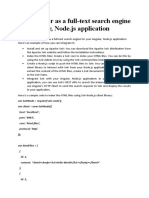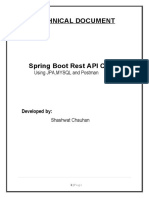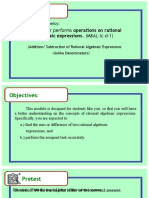0% found this document useful (0 votes)
128 views30 pagesCatbook Workshop: Intro To Nodejs: Monde Duinkharjav
This document summarizes a workshop on introductory NodeJS concepts. It discusses what NodeJS is, how to initialize a NodeJS project using NPM, create a basic web server using the HTTP package, and organize the project structure. It also covers using the Express framework to handle requests and routes, sending HTML files instead of plain text responses, and separating code into different files for scalability.
Uploaded by
msuoodhCopyright
© © All Rights Reserved
We take content rights seriously. If you suspect this is your content, claim it here.
Available Formats
Download as PDF, TXT or read online on Scribd
0% found this document useful (0 votes)
128 views30 pagesCatbook Workshop: Intro To Nodejs: Monde Duinkharjav
This document summarizes a workshop on introductory NodeJS concepts. It discusses what NodeJS is, how to initialize a NodeJS project using NPM, create a basic web server using the HTTP package, and organize the project structure. It also covers using the Express framework to handle requests and routes, sending HTML files instead of plain text responses, and separating code into different files for scalability.
Uploaded by
msuoodhCopyright
© © All Rights Reserved
We take content rights seriously. If you suspect this is your content, claim it here.
Available Formats
Download as PDF, TXT or read online on Scribd
/ 30































































































